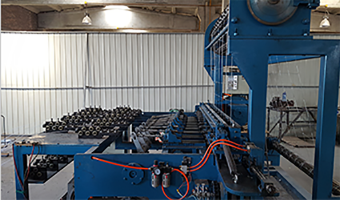The Art of Mirror Design Cutting
Mirror design cutting is a fascinating blend of art and precision, transforming plain reflective surfaces into stunning visual statements. With its roots in both traditional craftsmanship and modern innovation, mirror cutting has evolved to become an essential aspect of interior design, architecture, and even artistic expression. This article delves into the process, techniques, and significance of mirror design cutting in contemporary aesthetics.
Understanding Mirror Design Cutting
At its core, mirror design cutting involves the meticulous process of shaping and finishing mirrors to achieve specific designs and effects. Mirrors are made from glass, which is coated with a reflective material, usually silver or aluminum. The cutting process requires the use of specialized tools and techniques to ensure clean, precise edges and intricate patterns.
The cutting process begins with selecting the type of glass. The thickness and quality of the glass are crucial, as they affect how the mirror will reflect light and image. Once the glass is chosen, designers sketch their ideas, often on paper or using digital software, before translating them onto the mirror surface.
Techniques Used in Mirror Cutting
1. Flat Cutting This is the most basic form of mirror design cutting. It involves cutting the mirror into geometric shapes or simple designs. Flat cutting is often used for wall mirrors, decorative pieces, and basic furnishings.
2. Beveling Beveling adds a decorative edge to the mirror. This technique involves grinding the glass at an angle, which creates a prism effect that enhances the mirror's reflective quality. Beveled mirrors are often used in high-end interiors, providing a touch of elegance and sophistication.
3. Etching and Sandblasting For more intricate designs, etching and sandblasting techniques are employed. In etching, a chemical process creates designs on the mirror's surface. Sandblasting involves shooting fine particles at the glass to carve out patterns or images. These methods allow for greater artistic expression and customization.
4. Laser Cutting With advancements in technology, laser cutting has become a popular method in mirror design cutting. Lasers offer precision that manual methods cannot match, allowing for complex designs and patterns with minimal effort. This technique is especially popular for creating custom-made mirrors for clients looking for unique and personalized pieces.
mirror design cutting
The Importance of Design in Mirror Cutting
Design plays a vital role in the effectiveness of mirror cutting. A well-designed mirror does not merely serve a functional purpose; it also enhances the aesthetic appeal of a space. Mirrors can create the illusion of depth and space, reflecting light and making rooms appear larger and brighter.
In interior design, the strategic placement of mirrors can influence the mood and atmosphere of a room. For instance, a large, intricately designed mirror can serve as a focal point, while smaller decorative mirrors can complement other design elements in a space. The choice of frame, shape, and design pattern can drastically alter the look and feel of the environment.
Furthermore, mirrors are often used as statement pieces in commercial spaces, such as hotels and restaurants, where they contribute to the overall ambiance. Designers and architects frequently incorporate mirrors into their plans, understanding their ability to reflect style and enhance the visual narrative of a space.
The Future of Mirror Design Cutting
As we move into the future, trends in mirror design cutting continue to evolve. Sustainable practices are gaining importance, with an increasing focus on using eco-friendly materials and manufacturing processes. Innovative design tools and technologies are also reshaping the industry, enabling designers to experiment with new shapes, interactive features, and smart mirror technology.
Additionally, the demand for customized and unique mirror designs is on the rise. Consumers are seeking personalized pieces that not only serve practical purposes but also resonate with their individual styles and preferences.
Conclusion
Mirror design cutting is an intricate blend of artistry and technique, with the power to transform spaces and evoke emotions. As technology and eco-conscious practices evolve, the possibilities for creative expression within this craft are boundless. Whether through a classic bevel or a modern laser-cut design, mirrors will continue to play a significant role in shaping the aesthetic landscape of our environments, reflecting not just our image, but our artistry and innovation as well.
 Afrikaans
Afrikaans  Albanian
Albanian  Amharic
Amharic  Arabic
Arabic  Armenian
Armenian  Azerbaijani
Azerbaijani  Basque
Basque  Belarusian
Belarusian  Bengali
Bengali  Bosnian
Bosnian  Bulgarian
Bulgarian  Catalan
Catalan  Cebuano
Cebuano  Corsican
Corsican  Croatian
Croatian  Czech
Czech  Danish
Danish  Dutch
Dutch  English
English  Esperanto
Esperanto  Estonian
Estonian  Finnish
Finnish  French
French  Frisian
Frisian  Galician
Galician  Georgian
Georgian  German
German  Greek
Greek  Gujarati
Gujarati  Haitian Creole
Haitian Creole  hausa
hausa  hawaiian
hawaiian  Hebrew
Hebrew  Hindi
Hindi  Miao
Miao  Hungarian
Hungarian  Icelandic
Icelandic  igbo
igbo  Indonesian
Indonesian  irish
irish  Italian
Italian  Japanese
Japanese  Javanese
Javanese  Kannada
Kannada  kazakh
kazakh  Khmer
Khmer  Rwandese
Rwandese  Korean
Korean  Kurdish
Kurdish  Kyrgyz
Kyrgyz  Lao
Lao  Latin
Latin  Latvian
Latvian  Lithuanian
Lithuanian  Luxembourgish
Luxembourgish  Macedonian
Macedonian  Malgashi
Malgashi  Malay
Malay  Malayalam
Malayalam  Maltese
Maltese  Maori
Maori  Marathi
Marathi  Mongolian
Mongolian  Myanmar
Myanmar  Nepali
Nepali  Norwegian
Norwegian  Norwegian
Norwegian  Occitan
Occitan  Pashto
Pashto  Persian
Persian  Polish
Polish  Portuguese
Portuguese  Punjabi
Punjabi  Romanian
Romanian  Russian
Russian  Samoan
Samoan  Scottish Gaelic
Scottish Gaelic  Serbian
Serbian  Sesotho
Sesotho  Shona
Shona  Sindhi
Sindhi  Sinhala
Sinhala  Slovak
Slovak  Slovenian
Slovenian  Somali
Somali  Spanish
Spanish  Sundanese
Sundanese  Swahili
Swahili  Swedish
Swedish  Tagalog
Tagalog  Tajik
Tajik  Tamil
Tamil  Tatar
Tatar  Telugu
Telugu  Thai
Thai  Turkish
Turkish  Turkmen
Turkmen  Ukrainian
Ukrainian  Urdu
Urdu  Uighur
Uighur  Uzbek
Uzbek  Vietnamese
Vietnamese  Welsh
Welsh  Bantu
Bantu  Yiddish
Yiddish  Yoruba
Yoruba  Zulu
Zulu 

